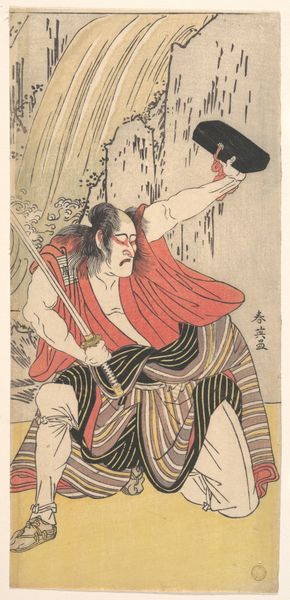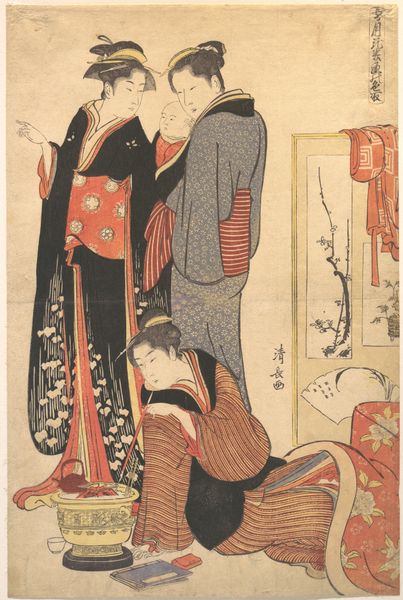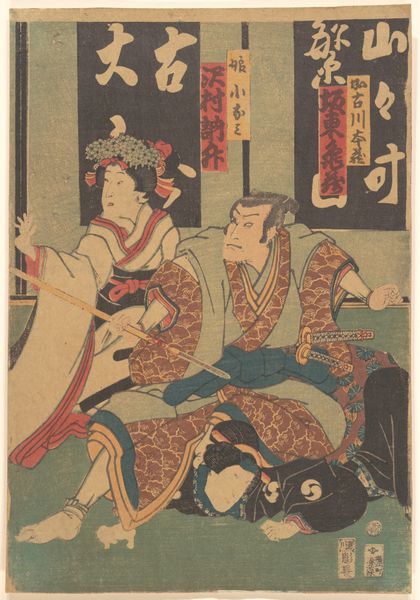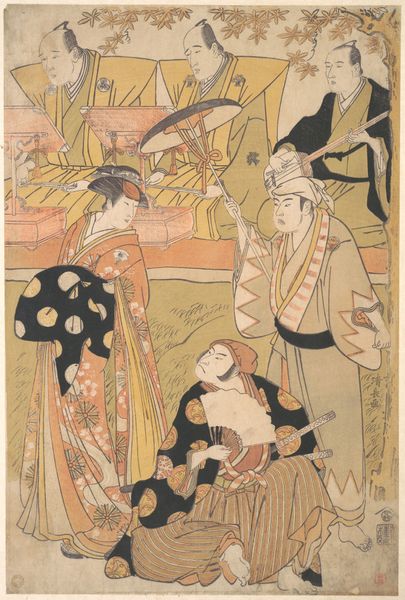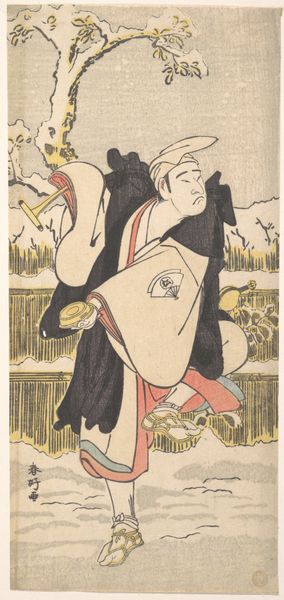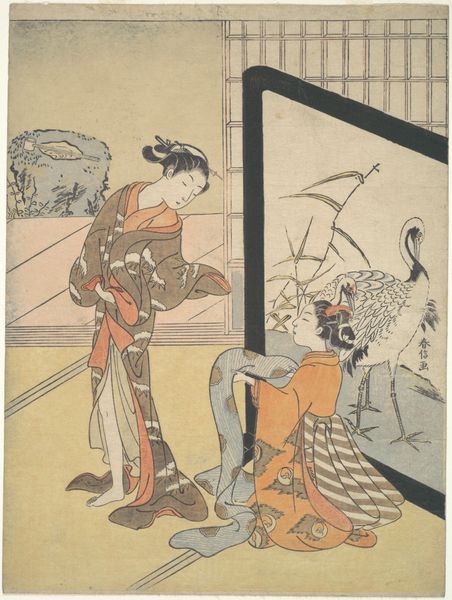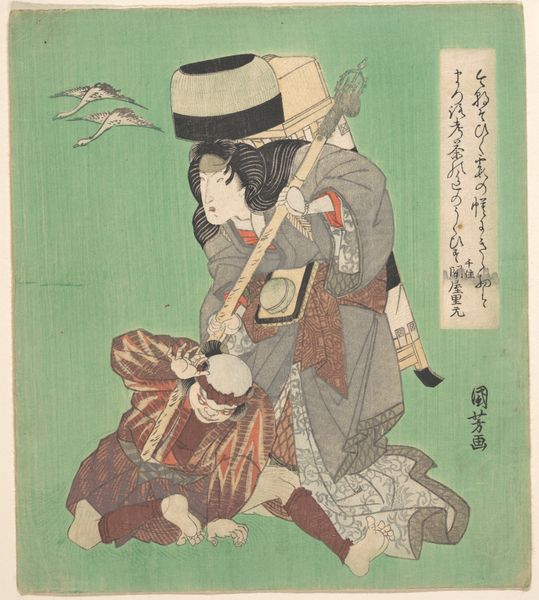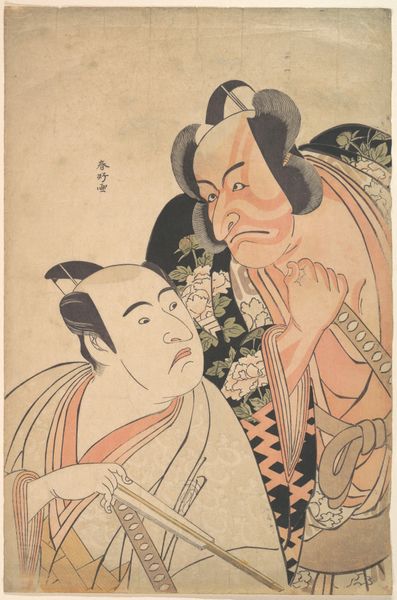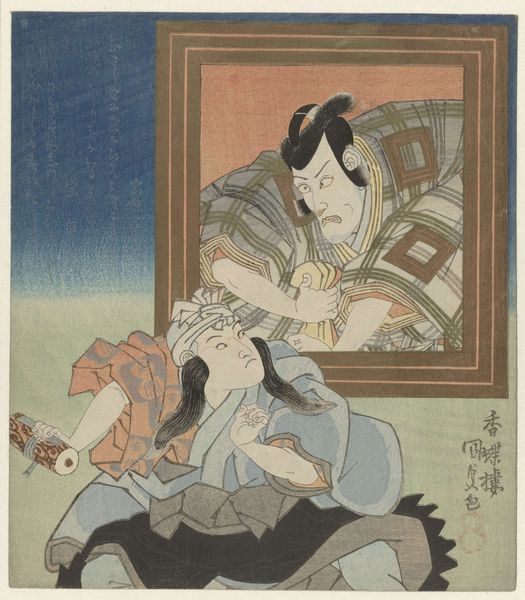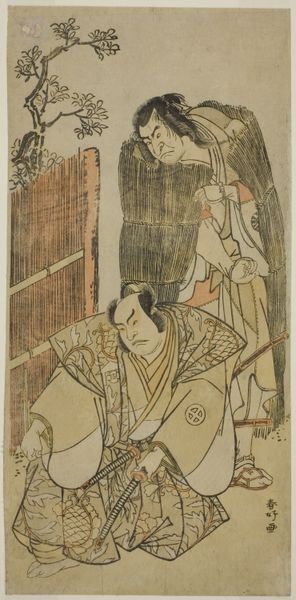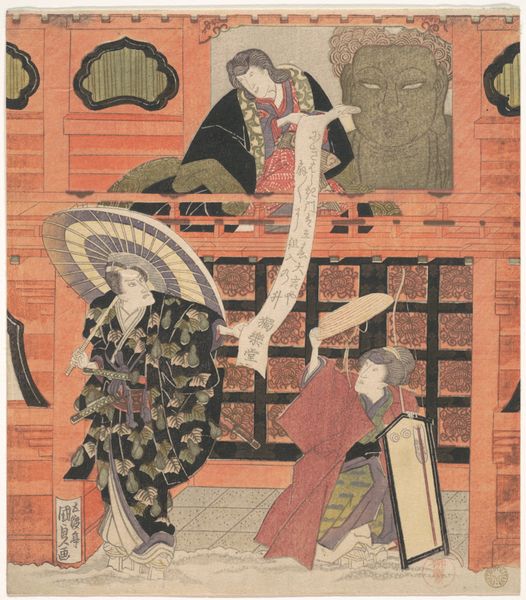
Scene from the Drama "Yuki-motsu-take Furisode Genji" 1785
0:00
0:00
print, woodblock-print
#
narrative-art
# print
#
asian-art
#
caricature
#
ukiyo-e
#
figuration
#
woodblock-print
Dimensions: 14 9/16 x 9 11/16 in. (37.0 x 24.6 cm)
Copyright: Public Domain
Editor: So here we have Katsukawa Shunko’s woodblock print, “Scene from the Drama ‘Yuki-motsu-take Furisode Genji’,” created in 1785. It’s got such a striking composition – the dynamic figure looming over the seated one. How do you interpret this work? Curator: It’s a powerful piece for sure. In its depiction of a scene from "Furisode Genji", Shunko isn’t just illustrating a story; he’s engaging in a broader commentary on class, performance, and visibility in Edo society. This print comes from the Ukiyo-e tradition which flourished during a time when commoners found agency in culture that wasn't being provided through the state or by the artistic patronage of religious institutions.. How does the caricature influence your understanding of the social commentary present within the print? Editor: I didn't quite register it as a critique before. With the heightened expressions, are you suggesting it almost satirizes the characters and, perhaps, their roles within that society? Curator: Precisely! Shunko exaggerates features and expressions. He uses the print, accessible to the masses, as a mirror reflecting and questioning societal structures and individual roles within them. Do you consider that the class system in feudal Japan created visible gender disparities too? How would it alter your analysis of the artwork if these were gendered criticisms being emphasized by Shunko? Editor: That's fascinating to think about, especially considering the highly stylized portrayal. I suppose, viewing it that way, the performance of masculinity itself becomes a subject of scrutiny. It certainly broadens the scope of possible readings of the woodblock. Curator: Exactly. By thinking about how this artwork is constructed, and then about whose perspective it's being offered from and through, and which social power relations are implicated in the artistic choices themselves we can engage with our present realities more incisively and with increased understanding. Editor: I never considered approaching the woodblock's critique through these theoretical frameworks, particularly related to power. Thanks for sharing that. I'm looking forward to taking this into consideration in future conversations!
Comments
No comments
Be the first to comment and join the conversation on the ultimate creative platform.
